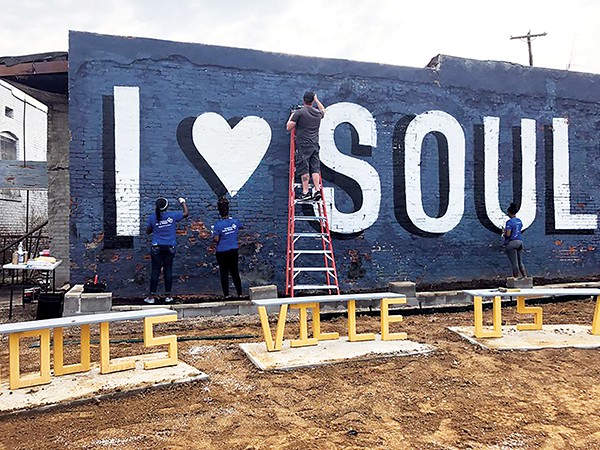Project Green Fork and Clean Memphis launched 10 years ago. Now both are under the Clean Memphis umbrella. Janet Boscarino, the group’s leader, said Memphis is cleaner and greener than it was a decade ago. But there is still more work to be done. — Toby Sells
Memphis Flyer: What did Memphis look like when Clean Memphis started?
Janet Boscarino: At the time, it felt to me that we’d lowered the bar. For the large part, there seemed to be a lack of people who seemed to be concerned about the look and feel of an area.
 Facebook/Clean Memphis
Facebook/Clean Memphis
clean up Soulsville.
There was litter on the exit ramps and on the interstate. Some businesses, too, weren’t maintaining their property. There were weeds in the sidewalk — just lowering the bar. It reflected, to me, a lack of pride. We love our kind of grit and grind in Memphis in one aspect, which I think is very positive, but not in the sense of a regressive look at who we are.
MF: What did you want to do when you got started?
JB: I just wanted to create a space for people to become involved in [cleaning up Memphis]. You’d hear a lot of … people complaining about it but not necessarily going and doing it. Memphis City Beautiful and others were trying to do things, but what I felt was missing was a strategy in engagement to raise the level of awareness of how bad the problem was and to make it easy for people to enter that space.
MF: How did you get started?
JB: We began by helping neighborhoods identify what projects they wanted to work on. We had to learn how best to support neighborhoods. There’s a fine balance between going in and saying “this is what you should do” and working with them to help understand what they want and need to do. That’s where our heart is. How do we help support you in what you need to do and bring resources to bear? It can be very tricky.
MF: Have things changed here?
JB: We’ve improved drastically in a lot of areas. Concentrated blight is still a problem in some areas because that’s not about the attitudinal change. It’s about much more complicated issues.
There are a lot of reasons why a neighborhood might look terrible. It certainly didn’t start with people not caring about their neighborhood. You have disinvestment. You had the mortgage crisis and all the blight-related issues there. There are some behavioral things, too. And we’re trying to work on those issues.
MF: What has changed in Project Green Fork’s 10 years?
JB: What I have seen is that people are more aware whether or not a restaurant is certified by Project Green Fork. When FedEx does catering, for example, they want a Project Green Fork-certified restaurant. It aligns with their sustainability goals.
Where we do struggle is with expansion. [Project Green Fork] is very Downtown-Midtown-East Memphis-centric. So, we’re looking at how to share this message of sustainable practices all over the city. MF: Is Memphis cleaner now? JB: In many places, it is much cleaner. I still think we struggle and have work to do. I think we have that with attitudinal change and behavior, too.